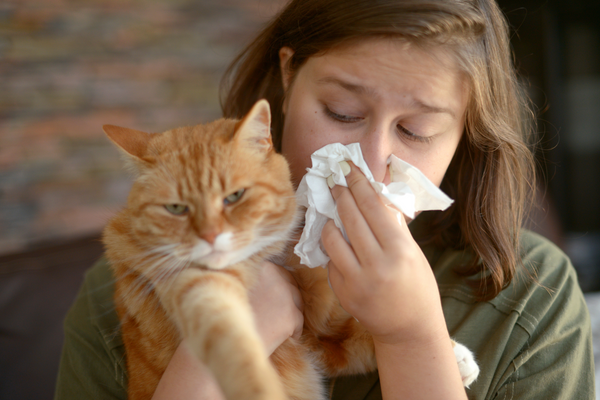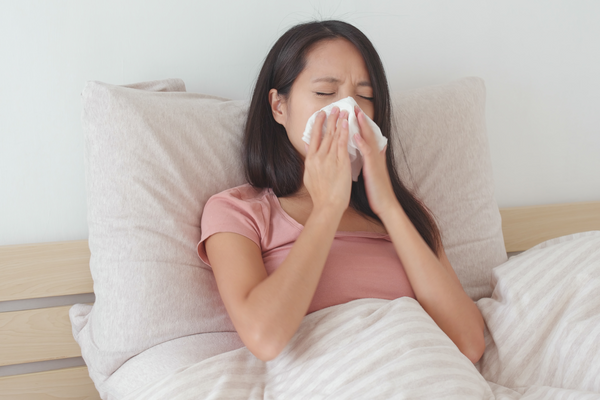How to Easily Reduce Dust Mites in Your Home

Dust mites are a universal household problem that are out of sight and mind for many people. At only 0.2 to 0.3 millimeters long, dust mites are much too small to be seen by the naked eye, but they are there, all around us. And while these microscopic arachnids don’t bite (thank goodness!), they can still have a tremendous impact on your health. There are at least 13 species of dust mites, and all of them are well adapted to the environment inside your home. Mites feed mainly on the tiny flakes of skin that people and animals shed each day. These flakes work their way deep down into the inner layers of furniture, carpets, bedding, pillows, and even stuffed toys. These are the places where mites thrive. An average adult person may shed up to 1.5 grams of skin in a day, which is enough to feed one million dust mites. Yikes! Unless you live in Antarctica, you definitely have dust mites in your home.
Although completely eliminating dust mites is impossible, there are ways in which you can drastically reduce their numbers and neutralize their threat.
How Do Dust Mite Allergens Affect Health?
Dust mites are the most common indoor allergen. According to the American Lung Association, chronic, ongoing exposure to dust mites at home can dramatically impact the health of people with asthma as well as those who are allergic or particularly sensitive to mites. Dust mites themselves aren’t the central problem, it’s their feces and decaying bodies, which contain a protein that mixes with household dust and enters the lungs when we breathe, triggering allergic reactions and asthma symptoms for at least 10% of the population. You may have a dust mite allergy and not even know it. If you suffer from year-round allergies, it’s worth a trip to your allergist to determine whether or not you’re allergic to dust mites.
Over the course of its life, a dust mite can produce up to 200 times its own body weight in waste. These allergens can cause an immune system response, known as allergic rhinitis. Dust mite allergies can range from mild to severe. A mild case may cause an occasional runny nose, watery eyes, and sneezing. In severe cases, the condition is ongoing, or chronic, resulting in persistent sneezing, cough, congestion, headaches, wheezing, facial pressure, tightness in the chest, eczema, or severe asthma attacks. People with asthma who are sensitive to dust mites face an increased risk of flare-ups or asthma attacks. Not to mention, these symptoms can also have a detrimental effect on sleep, causing people who are sensitive to dust mite allergens to wake up several times during the night.
How to Reduce Dust Mites
While there is no such thing as a magic formula for completely eradicating dust mites, there are several sure-fire methods and products that will significantly reduce dust mite populations and their allergens.

Control Indoor Temperature & Humidity
Dust mites love humid places, which means you may be battling the overall humidity in your home depending on your local climate. The ideal temperature for dust mites is between 68°F and 77°F, with a relative humidity around 70% to 80%. To make your home less desirable to dust mites, set your thermostat to 70°F or less and monitor the humidity to keep it below 50%. Dehumidifiers, air conditioning, and fans can help to control the humidity inside your home effectively.
Up Your Cleaning Game
It’s important to note that dust mites will live in even the cleanest of homes! However, with the average person shedding enough dead skin each and every day to feed one million of these tiny pesky critters, maintaining a frequent cleaning schedule is vital. Aim to clean and remove dust at least twice a week. Rather than using a dry dusting method which can cause the allergen to go airborne, use a damp microfiber cloth to remove dust from furniture, shelves, windowsills, and other dust-prone areas around your home. For extra dust mite-busting power, use Vital Oxide. You can either spray it directly onto surfaces after cleaning to remove dust and dust mite allergens, or spray it onto a microfiber cloth and wipe. Vital Oxide has the unique ability to significantly reduce allergen levels in most common household triggers, dust mite allergens included. It also neutralizes other common allergens like pet dander and molds.
Frequently Vacuum Rugs, Carpets, & Upholstery
To actually capture dust (as well as pet dander and other airborne allergens) you must use a vacuum with a sealed high-efficiency particulate air (HEPA) filter. HEPA filters work by trapping small particles in the fine mesh, including dust, pollen, and even tobacco smoke. Regular vacuums will only suck up big pieces of dust and may even send tiny microscopic particles flying right back out into the air, triggering allergy and asthma symptoms. According to the Environmental Protection Agency (EPA), HEPA filters can capture more than 99% of particles that are at least 0.3 microns in size and prevent them from being released back into the air. If you suffer from dust mite allergies, wear a dust mask and open the windows to ventilate when you vacuum or, if possible, ask someone else to do it for you.
Kill Dust Mites in Bedding
Once a week, wash your mattress cover, sheets, pillow cases, and blankets with an Anti-Allergen Laundry Detergent. While your bedding is in the washer, spray your bed pillows and decorative throw pillows with an Anti-Allergen Solution to eliminate allergens. Let your pillows air dry while your bedding is in the washer.
Clean Your Mattress Twice a Year
Brace yourself: your mattress could contain anywhere from 100,000 to 10 million dust mites. It’s important to give your mattress a deep clean at least once every six months to remove dust mite allergens, as well as dead skin cells, crumbs, hair, dirt, debris, and pet dander.
Mattresses provide the ideal conditions for these tiny creatures because shed skin flakes and perspiration provide an ideal source of food and humidity. Keep in mind that their legs contain tiny barbs that can hold on to fibers, making them hard to remove by normal vacuuming, so take your time and do a thorough job when you’re cleaning your mattress. Hot water extraction with a “rinse & vac” system works well and has the added benefit of reducing more allergens, as dust mite allergens are water soluble. Adding Dustmite & Flea Control to the hot water vacuum will help to keep dust mites from coming back. This is great news for allergy and asthma sufferers, since killing mites gets right to the allergen source. With dust mites eliminated, they can no longer produce particles that contribute to your symptoms. Keep in mind that dust mites thrive in places with high humidity, so make sure you allow plenty of time for thorough drying after using a hot water vacuum. A fan will help speed up your drying time.
Have questions about dust mites or other common indoor allergens? We have answers! The Ecology Works has been helping people with allergies and asthma since 1993. We can help you select the products you need to live a better, allergen-free life. Please feel free to Contact Us or message us on Facebook. No question is too small! We’re here to help.




